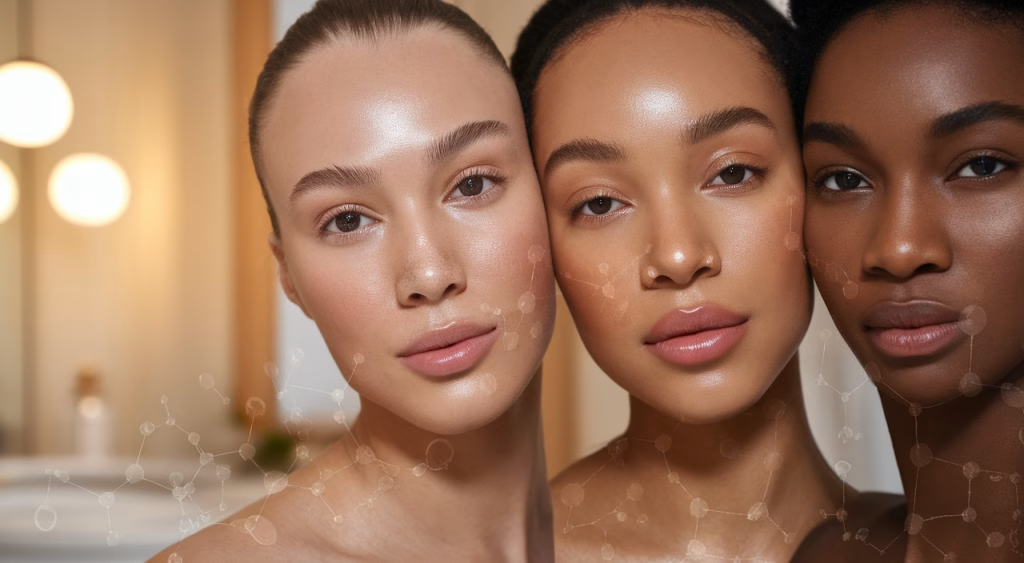How Does Retinol Work—and Why Is It the Gold Standard in Skincare?
TL;DR: Retinol is a derivative of vitamin A that triggers your skin to behave like its younger self—it speeds up cell turnover, helps produce more collagen, fades dark spots, unclogs pores, and smooths fine lines. It’s a powerhouse ingredient that dermatologists swear by, but it must be used correctly and consistently to avoid irritation. Whether you’re just starting or looking to optimize your routine, understanding the science behind how retinol works will empower you to get the glowing, healthy skin you want—without the myths and mistakes many fall into.
What Is Retinol and Why It’s a Skincare Staple
Retinol is one of the most well-researched and time-tested ingredients in dermatology. It’s part of a larger family called retinoids, which are all derivatives of vitamin A. These compounds help regulate cell growth and function, making them invaluable in both medical and cosmetic skin care.
The Difference Between Retinol and Retinoids
While all retinoids are related, not all are created equal in terms of strength and usage. Here’s a simple breakdown:
| Type | Over-the-Counter | Prescription | Potency |
|---|---|---|---|
| Retinol | Yes | No | Low |
| Retinaldehyde | Yes | No | Medium |
| Tretinoin | No | Yes | High |
Retinol is milder and more suitable for beginners, while tretinoin (often known by its prescription name) is stronger and might be recommended for those with more advanced skin concerns like deep wrinkles or significant acne.
Natural vs. Synthetic Vitamin A Derivatives
Both natural and synthetic forms of vitamin A can be effective, but synthetics tend to be more stable in formulas. Few skincare actives are as universally studied for anti-aging, acne, and pigmentation as retinoids regardless of their origin.
How Retinol Works on a Cellular Level
Retinol penetrates into the skin and is converted into retinoic acid—the active form used by the cells. Here’s what it does once it gets there:
- Collagen Production: Retinoic acid binds to nuclear receptors in your skin cells, stimulating fibroblasts to produce more collagen. This reduces wrinkles and improves skin elasticity.
- Cell Turnover: Retinol accelerates the rate at which keratinocytes (the outer skin cells) divide and shed. This results in smoother, clearer skin and fewer clogged pores.
- Melanin Regulation: It helps distribute melanin evenly, reducing dark spots and post-inflammatory pigmentation.
The result? Refined texture, minimized pores, brighter tone, and fewer breakouts. Think of it like pressing the reset button on tired or overworked skin.
Impact on Fine Lines, Acne, and Hyperpigmentation
Regular retinol use targets three core skin issues:
- Wrinkles & Fine Lines: Collagen stimulation leads to plumper-looking skin over time.
- Acne: Faster exfoliation and less oily buildup unclogs pores and keeps breakouts at bay.
- Dark Spots: Over months, retinol fades sun spots and acne marks by increasing cell turnover and reducing melanin clumps.
Best Retinol Strengths for Beginners
How to Choose the Right Concentration
If you’re just starting, lower is better. Begin with 0.25% or 0.3% concentrations and use twice a week, slowly building up frequency as your skin tolerates it.
| Skin Goal | Recommended Strength |
|---|---|
| Prevention / Early Signs of Aging | 0.25%–0.3% |
| Active Acne + Scarring | 0.5% |
| Moderate Wrinkles & Texture | 0.5%–1% |
Signs You’re Using Too Much Retinol
- Persistent redness or sensitivity
- Peeling that lasts more than a few days
- Stinging after applying simple moisturizers
If this happens, reduce frequency, buffer with moisturizer, or take a short break. Retinol irritation is real but manageable.
Common Myths About Retinol Explained
Myth 1: Retinol Thins the Skin
Fact: It actually thickens the dermis (the deeper layer of skin), leading to better elasticity and firmness. What may appear as “thinner” skin is exfoliation shedding old, dull layers.
Myth 2: You Can’t Use Retinol in Summer
Fact: You can use retinol all year round, as long as you wear sunscreen daily. Sun doesn’t deactivate retinol—it simply makes skin more sensitive to sunlight, so protection is key.
Myth 3: More Is Better
Too much too soon leads to inflammation without benefits. Start slow! Think of skin like a muscle—strength develops with consistent training, not overloading.
Expert Tips for Starting a Retinol Routine
How to Reduce Irritation
- The Moisturizer Sandwich: Apply moisturizer before and after retinol to buffer intensity.
- Start Slowly: Twice per week for the first 2 weeks is a wise average.
- Hydrate Deeply: Use ceramide-rich moisturizers to support your skin barrier.
When to Apply Retinol: Morning or Night?
Always at night. Retinol degrades in sunlight and can make your skin more photosensitive. Apply after cleansing and before moisturizer.
Safe Ingredients to Pair With Retinol
- Niacinamide: Calming and barrier-repairing
- Hyaluronic Acid: Boosts hydration
- Peptides: Helps with elasticity and inflammation
Avoid physically exfoliating scrubs, vitamin C (in the same routine), and alcohol-based toners early on to prevent irritation.
Retinol for Different Skin Types and Ages
Retinol in Your 20s, 30s, 40s+
- 20s: Great for early acne treatment and prevention-focused use. Stick to low-strength and 2–3 nights/week.
- 30s–40s: Prioritize wrinkle smoothing, dark spot fading, and collagen boosting. May tolerate 0.5% or higher.
- 50s+: Helps maintain skin volume and texture. Pair with restorative creams and frequent hydration.
For Sensitive Skin vs. Oily or Acne-Prone Skin
Sensitive Skin: Choose encapsulated retinol, buffer with moisturizer, and limit use to once or twice weekly.
Acne-Prone Skin: May benefit from higher concentrations or stronger retinoids, but always begin under guidance of a professional.
Keep track of your retinol results timeline: Most users begin noticing a glow within 4 weeks, reduced breakouts by week 6, and smoother, firmer skin by 10–12 weeks.
